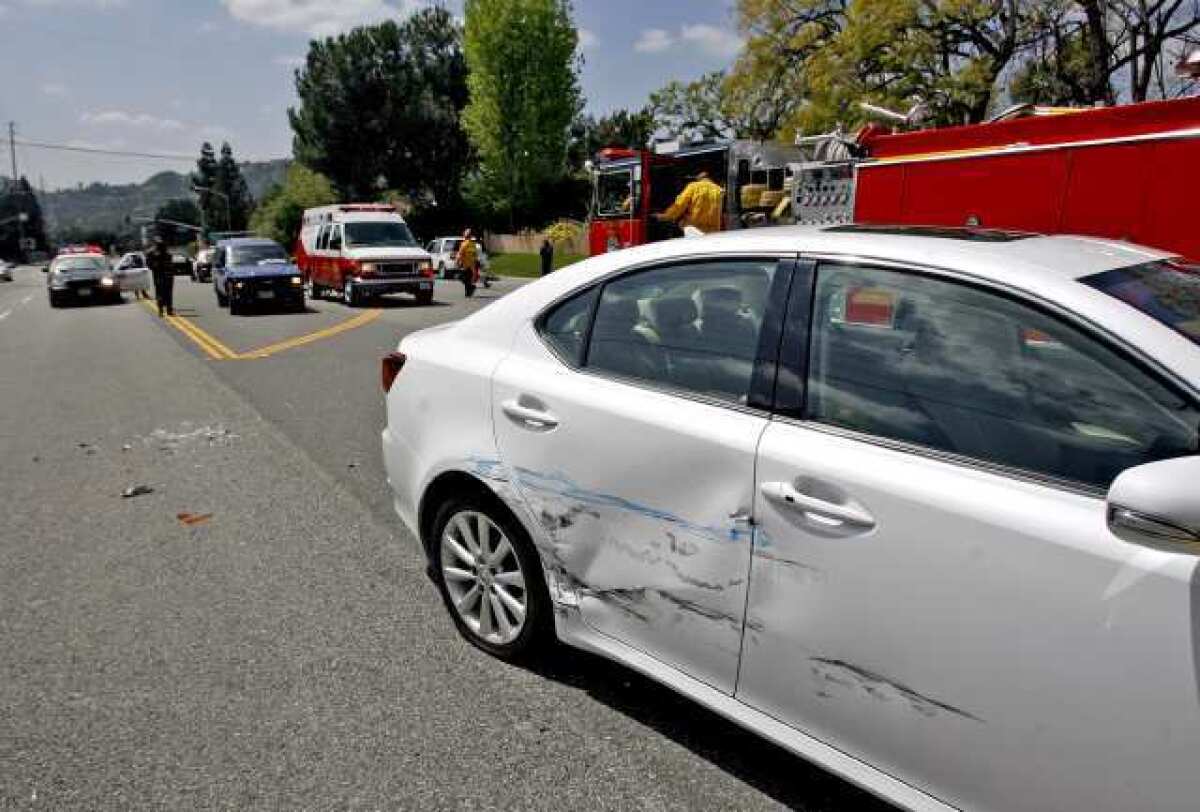2010 sees fewer traffic wrecks

While the closure of Angeles Crest Highway for most of this year has been a headache for commuters who relied on the mountain road, the absence of Crest traffic apparently has had a positive impact on the safety of drivers in La Cañada Flintridge.
Traffic collisions documented in the city during the first 11 months the year number 133 — less than the 169 recorded over the same period last year, and down significantly from the 202 logged January through November 2008, according to Sgt. Mark Slater of the Crescenta Valley Sheriff’s Station.
One potentially major factor: fewer cars on the road.
“Traffic volumes are down because of Angeles Crest Highway being closed,” said Slater. “We don’t have an influx of cars in the morning and afternoon coming up over the Crest.
With Caltrans close to reopening the highway, traffic volumes in 2011 are expected to rise to previous levels. But other factors may help curb fender-benders nonetheless.
Both Slater and City Traffic Engineer Erik Zandvliet said improvements along Foothill Boulevard over the past several years have also helped to decrease drivers’ speed, thereby increasing roadway safety.
Center-median landscape work and curb extensions that shorten crosswalks and increase driver and pedestrian visibility have helped reduce traffic speeds throughout the city over the past several years — so much so, said Zandvliet, that speed limits have been reduced in some areas in response to drivers tending to drive more slowly than before.
Speed limits along Foothill from western city limits to Hillard Avenue have been reduced from 40 to 35 miles per hour as drivers started slowing down due to improvements, said Zandvliet, and the stretch of Foothill between Alta Canyada and Hampton roads has gone from 35 to 30 miles per hour.
New left-turn pockets, fresh lane striping and improved coordination of intersections controlled by traffic signals also have played a role in encouraging slower, safer driving.
“Traffic no longer speeds through town, and there are fewer points of conflict” created when cars would otherwise turn left into driveways, said Zandvliet. “Also, the new traffic signals have helped to direct traffic more safely through previously un-signalized intersections.”
Traffic signals in the Town Center area and near the termination of Angeles Crest Highway at Foothill are coordinated to better manage traffic flow.
Signals where Foothill meets Beulah, Sport Chalet Drive, Angeles Crest Highway and Chevy Chase Drive — plus one at the Town Center entrance near Angeles Crest — “essentially act as one signalized intersection,” said Zandvliet. “There are many different movements going on at once. At a red light, you’re actually waiting for movements going on farther ahead of you. If you weren’t waiting, you’d be going into conflict with other cars.”
Because the integrated signals respond to automated traffic-flow detectors, Zandvliet said those intersections should remain safer despite increased use after Angeles Crest Highway is reopened.
“As traffic increases, the green signal will stay green longer and it will balance out the greens in all directions,” he said.
In January, however, officials will once again adjust these integrated signals to reduce a few seconds of unnecessary stop time for east- and west-bound traffic.
“The goal is to try to move traffic through [from Beulah past Chevy Chase] without stopping once you get the green light,” said Zandvliet.